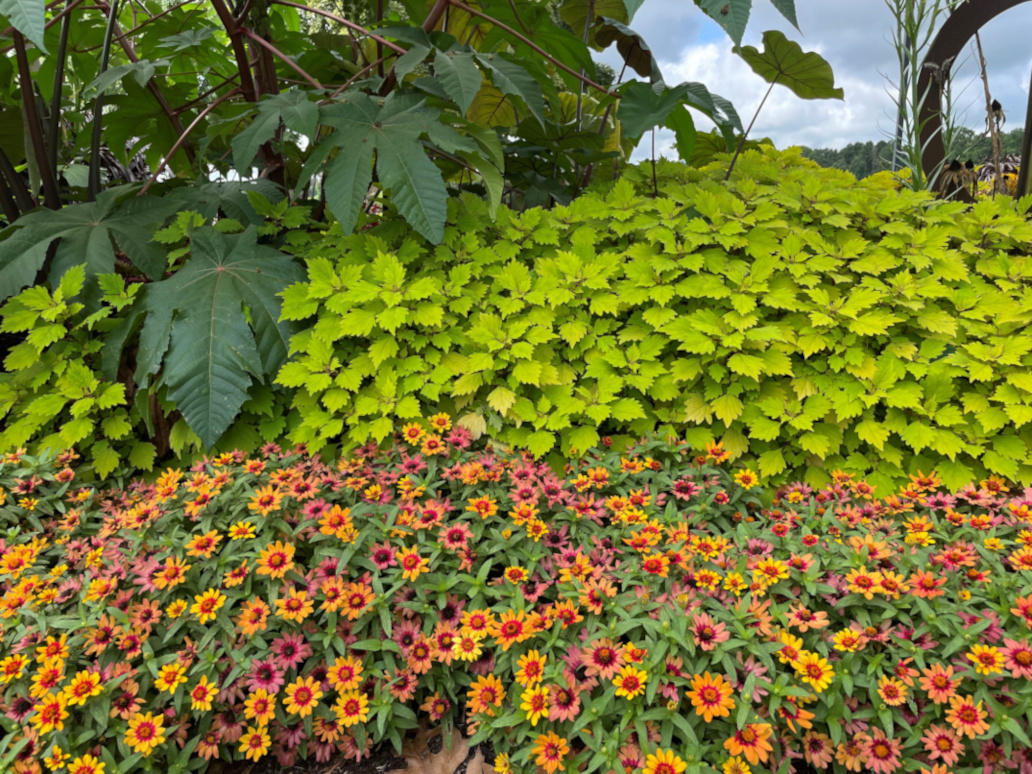
UT Gardens’ April 2022 Plant of the Month
Submitted by Celeste Luckey Scott, UT Extension Madison County
Zinnias are a longtime favorite of home gardeners. They come in a wide variety of colors and flower forms ranging from single, to fully double, cactus flowered, and even crested. They are easy to grow from seed, relish full sun, are loved by pollinators and have a long vase life for cut stems. They also are tough and drought tolerant, requiring little to no additional watering once established. What more could a gardener ask for than a flower that has attributes like these? How about disease resistance?
The typical garden zinnia, Zinnia elegans, falls short in one category, disease resistance. It is susceptible to a wide range of foliar diseases including powdery mildew, cercospora leaf spot, alternaria leaf spot and bacterial leaf spot. Some Z. elegans cultivars claim resistance to these diseases, yet none can compare to the clean foliage offered by the hybrid Profusion and Zahara series. These series are hybrids of Z. elegans x Z. angustifolia, which incorporate desirable attributes from each parent. Z. angustifolia, commonly known as the narrow leaf zinnia, has natural resistance to foliar disease and passes that trait along, while Z. elegans provides an array of flower color and larger blooms up to 2.5 inches in diameter. There are some tradeoffs, however. The hybrids have a compact growth habit of only 1 to 1.5 inches height similar to that of Z. angustifolia. This change in stature shifts its use in the garden from that of a striking mid-border cut flower to a non-stop flowering front-border plant.
Profusion and Zahara have been recognized through the years for their endurance and performance in the landscape as All-America Selection (AAS) winners. In the early 2000s ‘Profusion Orange’, ‘Cherry’ and ‘White’ each received AAS recognition. In 2010, ‘Zahra Starlight Rose,’ ‘Double Zahara Fire,’ and ‘Double Zahara Cherry’ were recognized, followed by ‘Profusion Double Deep Salmon’ and ‘Profusion Double Hot Cherry’ in 2013. Most recently, ‘Profusion Red’, and ‘Profusion Red Yellow Bicolor’ received AAS winner award status. This broad color range allows makes for a very versatile plant in the landscape and containers.
Zinnia in general do not look particularly attractive to shoppers in cell packs or small containers, and for this reason may be difficult to find at local garden centers. However, they are very easy to start from seed and can even be direct-seeded outdoors once soil temperatures rise and all threat of frost has passed. The University of Tennessee Gardens, Jackson, grew ‘Profusion Red Yellow Bicolor’ in 2021, and it was phenomenal all the way until frost. The older blooms faded to shades of orange and pink while the new growth simultaneously produced new flushes of vibrant yellow-red blooms. All three UT Garden locations grow at least one example of these outstanding Profusion and Zahara zinnias during the summer months.
The UT Gardens includes plant collections located in Knoxville, Crossville and Jackson. Designated as the official botanical garden for the State of Tennessee, the collections are part of the UT Institute of Agriculture. The Gardens’ mission is to foster appreciation, education and stewardship of plants through garden displays, educational programs and research trials. The Gardens are open during all seasons and free to the public.